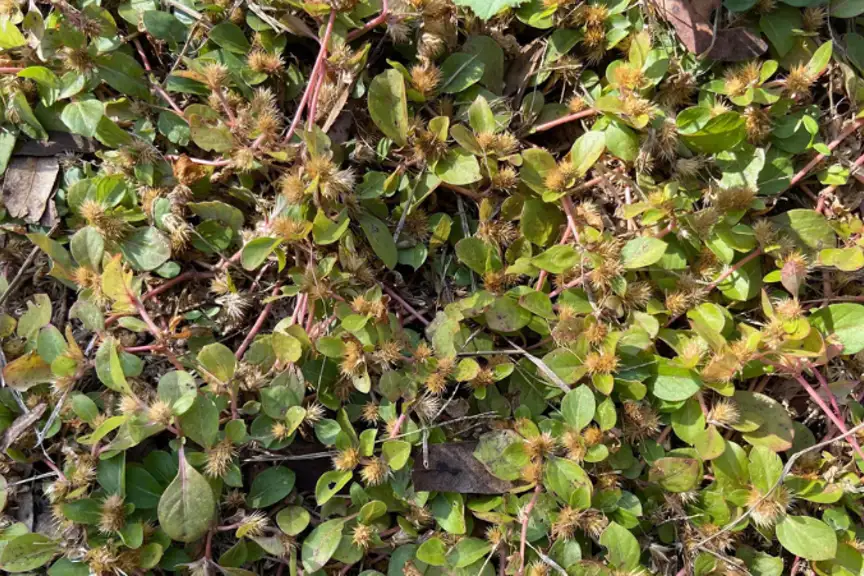Khaki Weed Control in Your Lawn & Garden
Alternanthera pungens

Alternanthera pungens

To control khaki weed, wear gloves and manually pull or dig the weed out. Ensure the entire taproot is removed and either bin or burn the weed – do not add to green waste or the compost bin. The best time to remove khaki weed is before flowering and/or before the prickles appear.
To help prevent khaki weed from appearing in your lawn, ensure your lawn is healthy by regularly watering, feeding, mowing, and dethatching and aerating as needed. A thriving, healthy lawn is better able to crowd out weeds. Click here for more lawn care tips and advice.
Khaki weed is a common weed of lawns, pastures and disturbed sites. You may have seen it growing as a dense green carpet in your lawn or garden bed. Its native to South America, but unlike most weeds, the reason for its introduction to Australia is not widely known. It's suspected to have arrived in the late 1800s – the hard coating on the seeds allow it to be dispersed far and wide. Khaki weed favours warm and moist climates, but it will grow in most climates provided there is adequate moisture.
Khaki weed is a sprawling or prostrate perennial weed (sometimes annual, depending on the climate) that grows into a dense mat. Its stems are reddish, can trail up to 60 mm and are covered in fine, soft, silky hairs. The nodes along the stem will form roots if they are in contact with the ground. The leaves are arranged in opposite pairs along the stem, with one leaf larger than the other. They are green and oval-shaped with distinct veins on the undersides.
Small inconspicuous cream-coloured flowers appear from autumn and are surrounded by pointy yellow-brown bracts – these are often mistaken as being the petals. Prickly yellow-brown burred fruits appear shortly after, each housing one seed. The burrs detach from stems and are dispersed further as they attach to animals, clothing, shoes, machinery or vehicles. These 'prickles' are also a real nuisance as they can cause injury to livestock, pets and humans. As khaki weed is often found in the lawn and has prickly burrs, it is often mistaken for bindii.
Seeds germinate in spring or summer after rain. Once established, the plant forms a deep, thick tap root and this enables it to survive in periods of extended drought. In drought or dry conditions, most of the plants vegetative parts die back, but once there is adequate moisture with rain or irrigation, the rootstock readily reshoots. Stems and root fragments will also readily form new growth, allowing the weed to grow into a dense mat that can be difficult, but not impossible to remove.